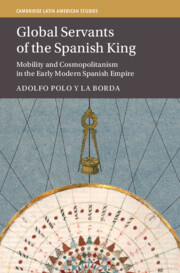Refine search
Actions for selected content:
168 results
Austrian World Practices: The Vienna Philharmonic and the Global History of Austrian Culture in the Twentieth Century
-
- Journal:
- Central European History , First View
- Published online by Cambridge University Press:
- 15 July 2025, pp. 1-23
-
- Article
-
- You have access
- Open access
- HTML
- Export citation
Chapter 1 - Sons of Sunny Italy
-
- Book:
- Emigrant Soldiers
- Published online:
- 05 June 2025
- Print publication:
- 26 June 2025, pp 1-29
-
- Chapter
- Export citation
Law, peace, and world order: Hans Kelsen’s global thought in the 1940s
-
- Journal:
- Journal of Global History , First View
- Published online by Cambridge University Press:
- 26 May 2025, pp. 1-15
-
- Article
-
- You have access
- Open access
- HTML
- Export citation
The circle of the world: the global diplomacy of Caliph al-Manṣūr
-
- Journal:
- Bulletin of the School of Oriental and African Studies , First View
- Published online by Cambridge University Press:
- 11 April 2025, pp. 1-16
-
- Article
-
- You have access
- Open access
- HTML
- Export citation
What is Digital Global History Now?
- Part of
-
- Journal:
- Transactions of the Royal Historical Society , First View
- Published online by Cambridge University Press:
- 24 March 2025, pp. 1-19
-
- Article
-
- You have access
- Open access
- HTML
- Export citation
US-Japan Conflict and the Rise of the Synthetic in Global Capitalism
-
- Journal:
- Asia-Pacific Journal / Volume 19 / Issue 18 / September 2021
- Published online by Cambridge University Press:
- 14 March 2025, e1
-
- Article
-
- You have access
- Open access
- Export citation
16 - Deglobalizing the Global History of Europe
-
-
- Book:
- Globalizing Europe
- Published online:
- 06 March 2025
- Print publication:
- 13 March 2025, pp 260-270
-
- Chapter
- Export citation
6 - European Social History and the Global Turn
-
-
- Book:
- Globalizing Europe
- Published online:
- 06 March 2025
- Print publication:
- 13 March 2025, pp 76-85
-
- Chapter
- Export citation
5 - Religion and the Global History of Europe
-
-
- Book:
- Globalizing Europe
- Published online:
- 06 March 2025
- Print publication:
- 13 March 2025, pp 66-75
-
- Chapter
- Export citation
10 - Migration and European History’s Global Turn
-
-
- Book:
- Globalizing Europe
- Published online:
- 06 March 2025
- Print publication:
- 13 March 2025, pp 138-158
-
- Chapter
- Export citation
13 - Globalizing Europe’s Musical Past
-
-
- Book:
- Globalizing Europe
- Published online:
- 06 March 2025
- Print publication:
- 13 March 2025, pp 200-219
-
- Chapter
- Export citation
3 - Making Europe’s Economy
-
-
- Book:
- Globalizing Europe
- Published online:
- 06 March 2025
- Print publication:
- 13 March 2025, pp 42-55
-
- Chapter
- Export citation
1 - Global Europe
-
-
- Book:
- Globalizing Europe
- Published online:
- 06 March 2025
- Print publication:
- 13 March 2025, pp 1-26
-
- Chapter
-
- You have access
- HTML
- Export citation
2 - Global Conjunctures and the Remaking of European Political History
-
-
- Book:
- Globalizing Europe
- Published online:
- 06 March 2025
- Print publication:
- 13 March 2025, pp 27-41
-
- Chapter
- Export citation
9 - Global Material Culture in Early Modern and Modern Europe
-
-
- Book:
- Globalizing Europe
- Published online:
- 06 March 2025
- Print publication:
- 13 March 2025, pp 123-137
-
- Chapter
- Export citation
4 - European Intellectual History after the Global Turn
-
-
- Book:
- Globalizing Europe
- Published online:
- 06 March 2025
- Print publication:
- 13 March 2025, pp 56-65
-
- Chapter
- Export citation
Afterword: Global Histories of Modern Europe
-
-
- Book:
- Globalizing Europe
- Published online:
- 06 March 2025
- Print publication:
- 13 March 2025, pp 271-278
-
- Chapter
- Export citation
Conclusion
-
- Book:
- Global Servants of the Spanish King
- Published online:
- 20 February 2025
- Print publication:
- 27 February 2025, pp 290-296
-
- Chapter
- Export citation
Introduction
-
- Book:
- Global Servants of the Spanish King
- Published online:
- 20 February 2025
- Print publication:
- 27 February 2025, pp 1-25
-
- Chapter
- Export citation

Global Servants of the Spanish King
- Mobility and Cosmopolitanism in the Early Modern Spanish Empire
-
- Published online:
- 20 February 2025
- Print publication:
- 27 February 2025
